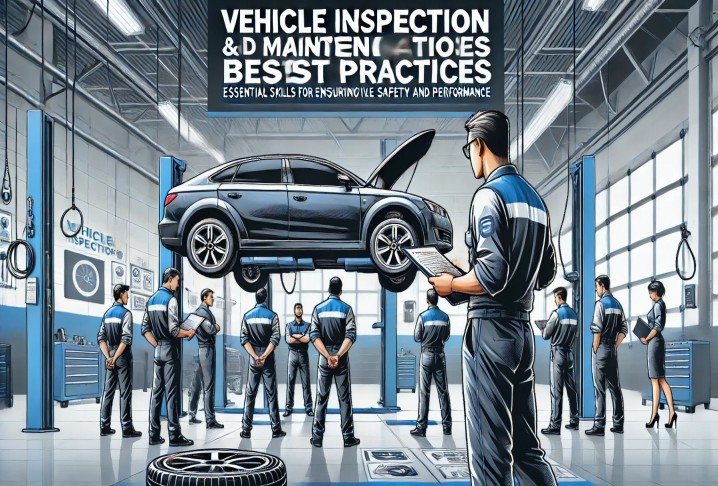
Click on each header to view!
This course provides a structured approach to vehicle inspection and maintenance, equipping participants with best practices to ensure vehicle reliability, safety, and longevity. It covers systematic inspection techniques, preventive maintenance strategies, diagnostic procedures, and compliance with industry standards.
- Basic understanding of vehicle operations and maintenance (recommended but not mandatory).
- Interest in automotive servicing, diagnostics, and preventive maintenance.
- Willingness to apply structured inspection techniques for vehicle health assessment.
- Automotive technicians and mechanics.
- Fleet managers and logistics personnel.
- Auto workshop owners and service advisors.
- Individuals responsible for vehicle maintenance in corporate or private settings.
- Weekdays: Theory sessions on inspection methods and maintenance planning.
- Weekends: Practical training on diagnostics, servicing, and fault detection.
- Final Assessment: Conducting a full vehicle inspection and maintenance report.
Module 1: Fundamentals of Vehicle Inspection and Maintenance
Module 2: Types of Vehicle Inspections (Pre-Trip, Periodic, and Comprehensive)
Module 3: Systematic Inspection Checklists and Procedures
Module 4: Preventive Maintenance Planning and Scheduling
Module 5: Identifying Common Mechanical and Electrical Faults
Module 6: Diagnostic Tools and Techniques for Efficient Troubleshooting
Module 7: Regulatory Compliance, Safety Standards, and Emissions Testing
Module 8: Digital Maintenance Logs and Fleet Management Solutions
(Group discounts and corporate training available.)
By the end of this course, participants will:
1. Understand the Importance of Vehicle Inspection and Maintenance
- Learn the impact of preventive maintenance on vehicle performance.
- Identify key areas of focus in systematic vehicle inspections.
2. Master Various Types of Vehicle Inspections
- Conduct pre-trip, routine, and deep-dive vehicle inspections.
- Develop checklists for different vehicle types and operational needs.
3. Apply Preventive Maintenance Techniques
- Implement maintenance schedules to reduce vehicle downtime.
- Learn servicing procedures to enhance vehicle efficiency and safety.
4. Diagnose and Identify Common Vehicle Issues
- Understand engine, electrical, and mechanical fault detection.
- Use professional tools to diagnose and fix common problems.
5. Ensure Regulatory Compliance and Safety Standards
- Learn industry-specific safety protocols and legal requirements.
- Understand emissions control and environmental compliance measures.
6. Utilize Digital Maintenance Logs for Fleet Tracking
- Implement computerized systems for service history tracking.
- Use fleet management software to schedule and monitor maintenance.
7. Enhance Vehicle Longevity Through Best Practices
- Reduce excessive wear and tear through strategic maintenance.
- Apply cost-effective repair and servicing solutions.